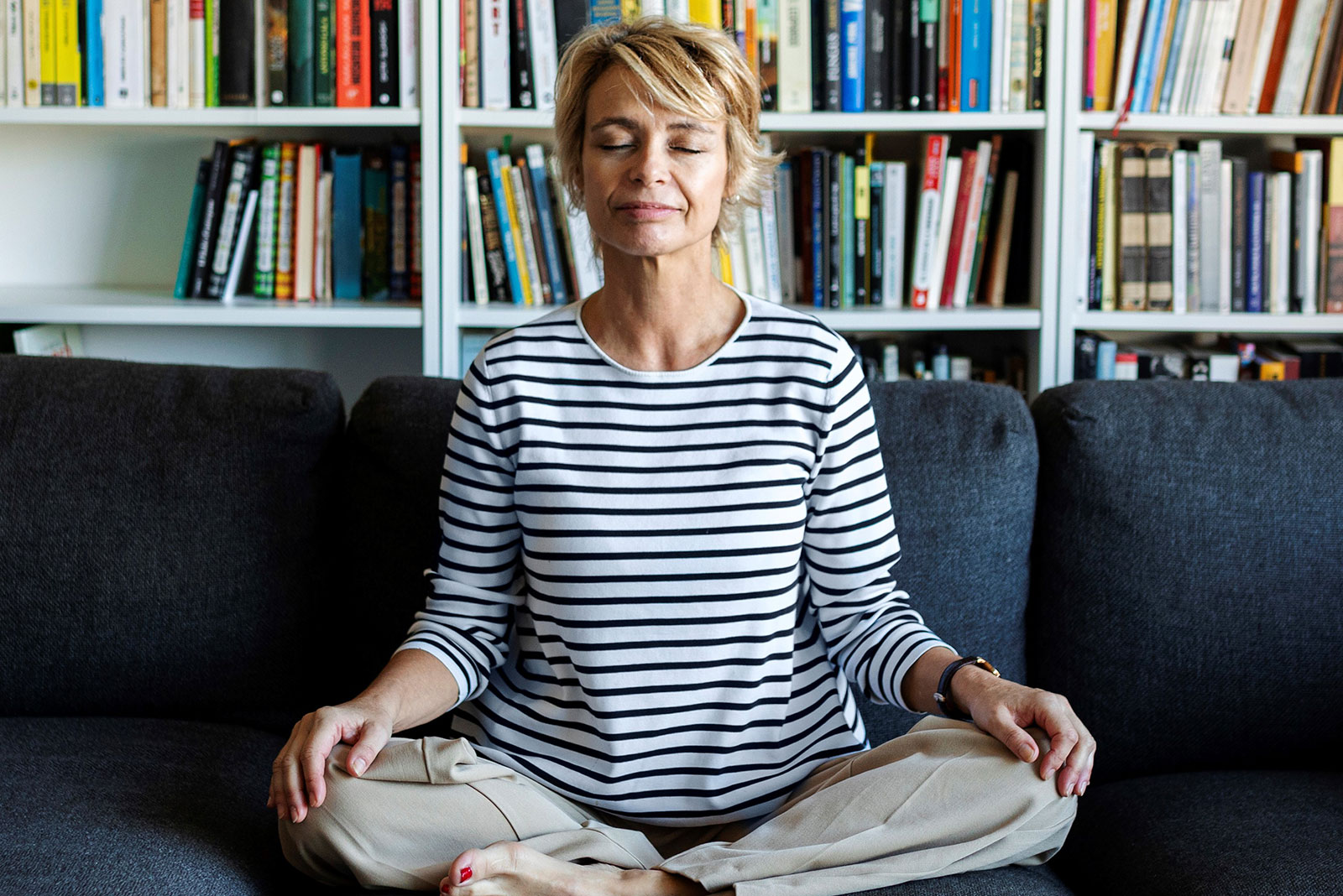
This biweekly column is sponsored by The Mather in Tysons, Virginia, a forward-thinking Life Plan Community for those 62 and better.
For many, the holiday season includes traditions, expectations, commitments — and rising levels of stress. If you are among those who feel their stress levels rising at this time of year, try an easy solution: mindful meditation.
Myriad studies have shown that a regular meditation practice can reduce stress and physically change the brain so that you have greater capacity to continually manage stress. Learning to avoid stress saves a lot of wear and tear on your body as well as your brain.
Mindful meditation refocuses the attention, calming the mind and lowering blood pressure and heart rate. A morning meditation session of even a few minutes can help you manage stress throughout your day.
As you learn to focus, you’re training your attention and your ability to tune out the information overload and jumbled thoughts we live with constantly — and better attention means a sharper memory. Additionally, studies show that meditation can actually grow, or increase the volume of, areas of the brain responsible for:
- complex cognitive processes including planning, goal setting, decision making, attention, and short-term memory
- positive mood
- improving awareness of body, gut feeling, and empathy
- long-term memory
Types of Meditation
Meditation is simple and takes as little as a few minutes a day. But remember — if you want to enjoy the benefits above, you’ll need to meditate regularly, and ideally that means every day.
Here are a few types of meditation to consider:
Mindfulness sitting meditation is the most common form of meditation. Sit comfortably with your back, neck, and head straight but not stiff. Concentrate on your breathing and the sensations it creates. When your mind wanders or you become distracted, gently return your focus to your breath. Try this for just five minutes at first, gradually increasing the time.
Visualization meditation involves mental visualization of an image, which is usually meaningful or religious. While you meditate (as above), you try to mentally visualize your chosen image in as much detail as possible. As you do so, you may also reflect on the meaning of your image.
Walking meditation is similar to sitting meditation. Slowly and comfortably walk, focusing your attention on each step, the movement of your body, and the feel of each foot on the ground. When your mind wanders, gently bring it back to the movement of walking.
Loving-kindness meditation focuses on practicing compassion. As you practice cultivating feelings of loving kindness, gradually move your focus from feeling this toward yourself, then to loved ones, and then to people who are less close to you.
Look for a local meditation class, or purchase audio recordings of guided meditations. Once you’ve mastered the basics of your chosen type of meditation, it will become a matter of practicing — and enjoying the benefits that come with it.
The Mather, projected to open in Tysons, VA, in early 2024 for those 62 and better, is a forward-thinking Life Plan Community that defies expectations of what senior living is supposed to be.

